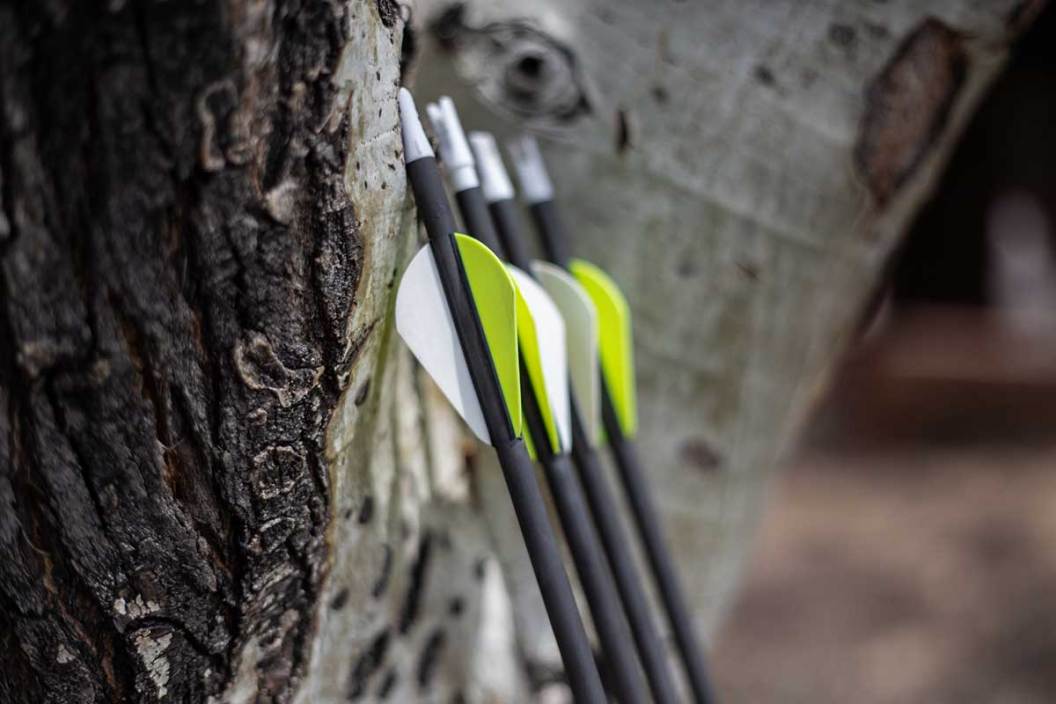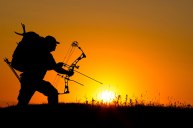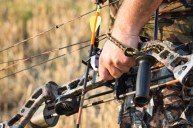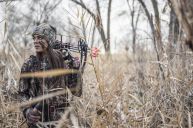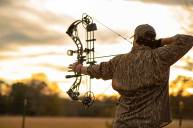I know how easy it can be to pick up a bow in September for the first time of the year, take a few shots, and declare yourself prepared to hunt the next weekend. I have done it, and it can work, but if you want to be serious about bowhunting, that is not going to cut it. The good news is, that you are seeking tips to help throughout the offseason, which is what brought you here in the first place. That means you are already looking for what you need to do this summer to become a better bowhunter and be ready when the season starts. The first thing that everyone will tell you to do is practice, but that is obvious, isn't it? Instead of that old cliche, here are four actionable things you can do this summer to be better prepared when the season rolls around.
Audit Your Bow & Gear
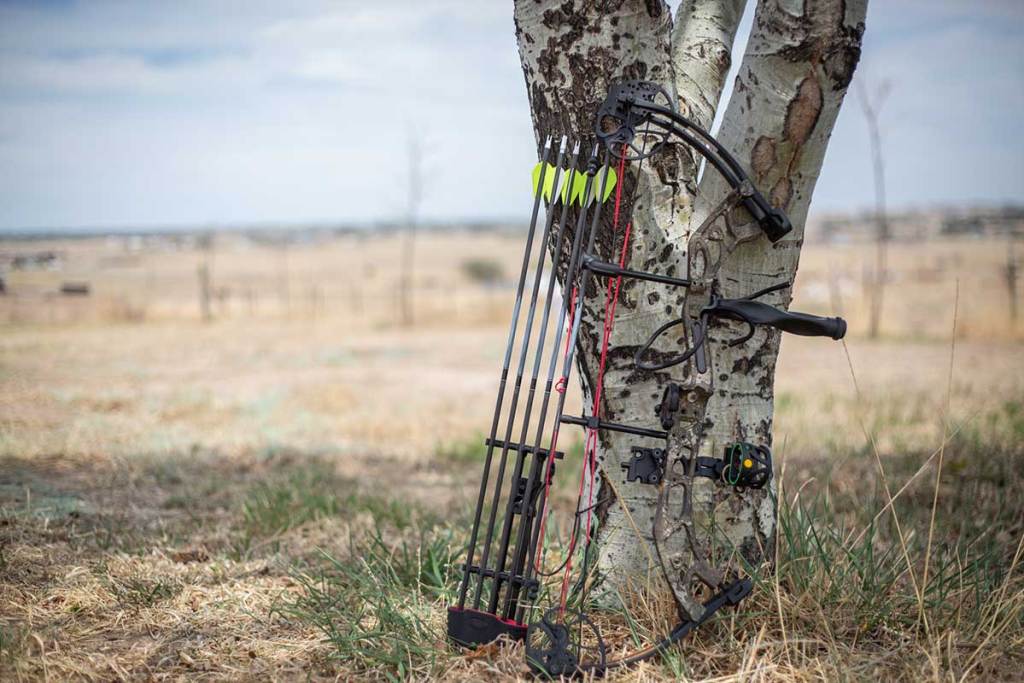
Andrea Kessler/Getty
If you are like me, you probably messed up some of your gear last season by shoving it into a closet where you didn't have to think about it. Well, now those broken fletchings need some attention.
Before you even get out in the yard and start practicing, you need to do a full audit of your gear. This single tip can save you a lot of time and effort when the season starts.
Arrows are a big item that need to be inspected. This summer I had to replace fletchings on three of the five arrows I keep in my quiver after a rough three-state season last year that saw a lot of traveling. You also want to make sure you bend your arrows a bit to make sure they are not cracked, make sure your field tips or broadheads are tightened down, and that broadheads are as sharp as can be.
Give your bow a good once over, too. Make sure your string is in good shape, and that you put some wax on it. Ask yourself: How long have you had that string, and is it fraying more than it should? It may be time to replace it.
Other than your bow gear, it is a good time to do a general audit of all of your hunting gear. Was there something you needed last season but didn't have? Or is there something that you broke or is wearing out? Now is the time to get or replace that gear. As an extra tip, you can find some good cold-weather gear sales during the summer.
Take Quality Shots, Not Quantity
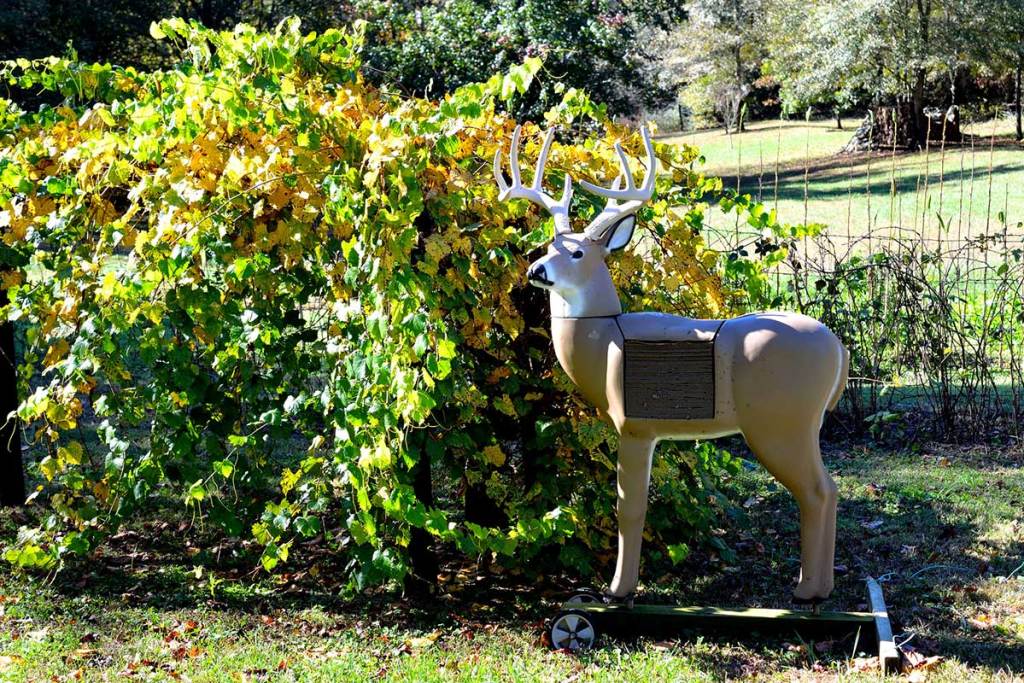
HildeAnna/Getty
All right, now for the real shooting advice. A mistake I made when I first started bowhunting was trying to shoot as much as I could. That sounds good at first, but I would shoot four or five arrows, go get them, shoot again, go get them, and before you know it I had shot 30-40 times. The problem was I wasn't focusing on my shots as much as I was just shooting.
Now I use two arrows and take plenty of time to shoot each of them at opposite sides of my target. I find that I do much better when I only shoot a dozen times, but I try my best on those dozen. After all, when you are in the stand, you typically only get one shot. You need to make every one of your practice shots count.
A lot of people will just use a single arrow and go get it after each shot. This makes you really slow down and pay attention to your shot. If you are having trouble going too fast, try this out. Plus if you get good at shooting your bow, you will likely hit your other arrows resting in the target and break them, which gets expensive. Robinhood's are cool, and I have done that, but it shouldn't be your goal.
Practice Holding Your Bow Back
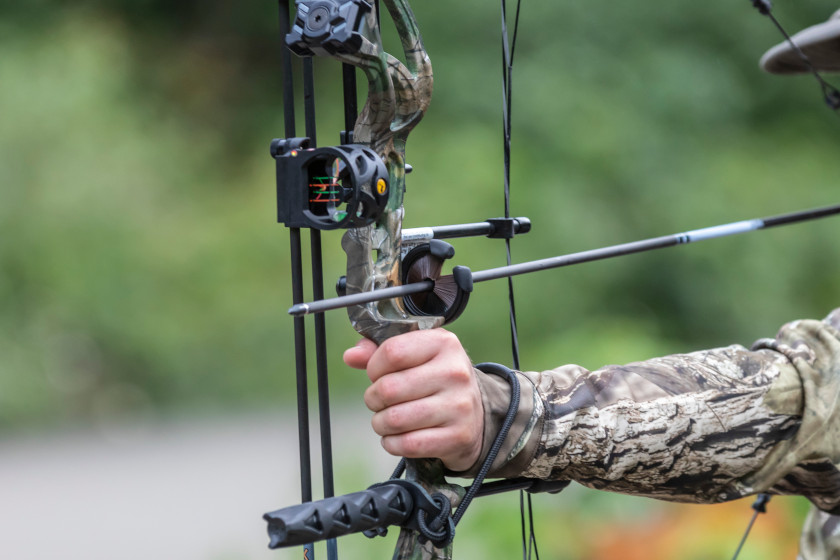
Getty Images: Stefan Malloch
Using a bow that has a high draw weight is great for being able to get a lot of penetration, but if you can't hold it at full draw, it won't do you much good. I remember my first time pulling my bow back at a deer, when it stepped behind a small tree. That tree was right where I wanted to shoot, and the deer's head was on the opposite side with a clear view of me.
That doe stood there for what felt like forever. She was feeding and looking around, and I was stuck at full draw. That 75-pound draw I had set my bow at was killing me. Finally, I couldn't hold it. Plus, I was shaking so much that I wouldn't have been able to shoot cleanly if I tried. I had to let down and she easily saw me and ran off. That's a hard lesson that I learned on day one. I needed to be more picky about when I draw back, and it doesn't matter how much I can draw, it's all about how much I can hold.
To practice this, try holding your draw back for as much as 30 seconds before you shoot. You will likely want to do this before you shoot too much, because it will wear your shoulder out pretty quickly. You may not want to do it a lot, or even every time you shoot, but you should do it every now and then to be prepared.
Shoot at Different Angles and Distances
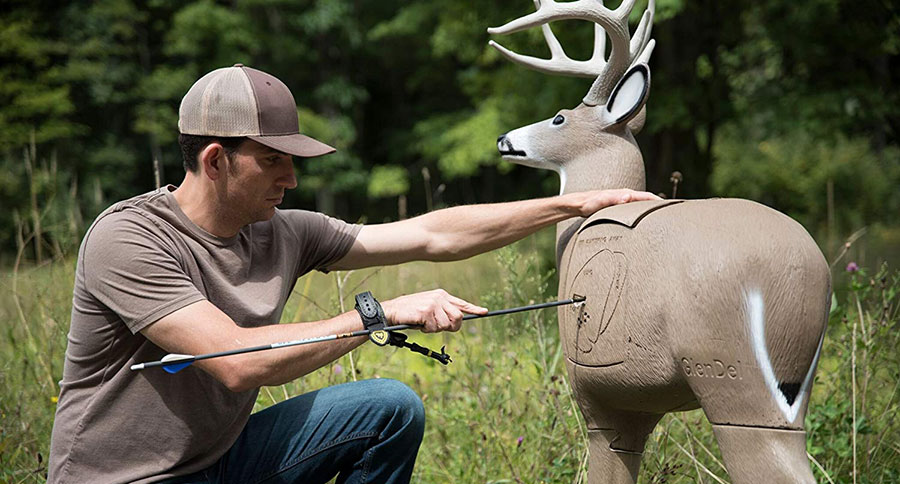
Plenty of bow shooters like to shoot at targets that are extremely far away, at least in bowhunting terms. I can definitively tell you that if you shoot at a deer 80 yards away, you may be able to hit the spot you are aiming at, but the deer will not be there when the arrow arrives.
You are better off only practicing shooting as far as you expect to shoot from your deer stand. For most people that is going to be about 40 yards, and the max should be 60 yards. This has a lot to do with your bow setup, personal experience, and comfort level, but don't waste time shooting farther than you will from your deer stand. You'll find out in a hurry that every shot you take with a bow from a stand is not going to be perfectly straight and lined up. When you are shooting from a stand or saddle, you are going to have to move in all sorts of ways to get a good shot on a deer passing by.
Start by standing off-center to your target and forcing your torso to rotate towards the target. You should be able to shoot around 180 degrees in front of you without moving your feet.
If you are hunting from a tree, your shots are not going to be flat either. If you can, you should practice shooting from an elevated platform. If there is not a platform available, you should try shooting out of your deer stand a few times. Obviously climbing up and down a tree in a climber or any other way is going to get old pretty quick, so I don't recommend doing this for every session, but you should shoot a couple of dozen arrows from your stand before the season starts.
As one last bonus tip for bowhunters, I'll mention the time of day you get your training in. If you have never shot your bow close to dark, you need to try it! I learned the hard way that I can see deer long after my peep sight disappears during full draw. Know your limits when it comes to daylight, and stick with them once the season rolls around.
